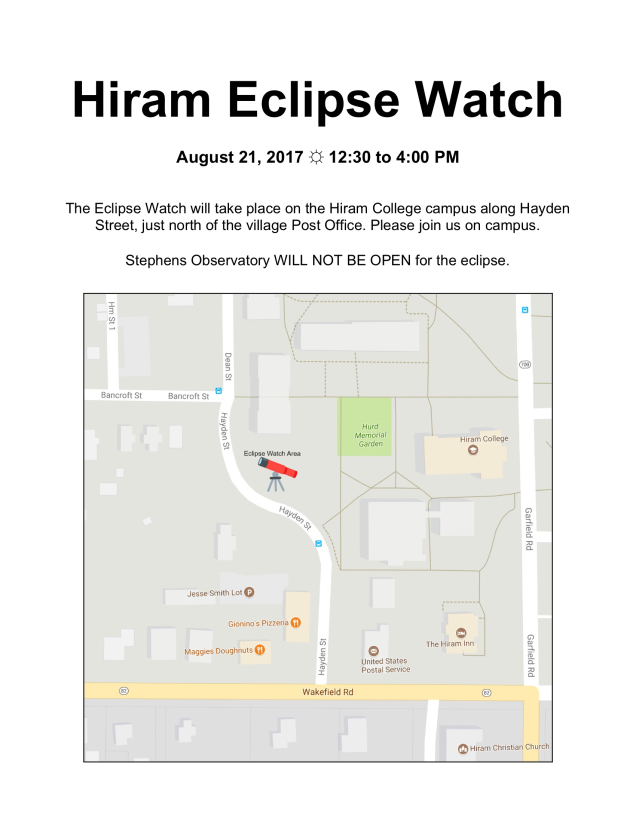
On Monday, August 21 millions gathered along a thin path crossing the United States to watch a total eclipse of the Sun, the first to cross the continent since June 1918. Those with favorable viewing conditions along the path of totality enjoyed a truly amazing sight and experience; a total solar eclipse is truly awe-inspiring. From Northern Ohio, outside of the eclipse path, 80 percent of the solar disk would be covered by the Moon. Public interest in the event was high and so we hosted the Hiram Eclipse Watch

We estimate at least 375 people came to the campus lawn to share nature’s show and enjoy the sight together. Some families brought blankets and had picnic lunch in the shade of trees while waiting for the eclipse to begin. Driven by media reports, demand for Sun-safe eclipse viewing glasses was tremendous. Hiram had 300 eclipse viewers available for free distribution and even with restriction to one viewer per family or group, we ran out of glasses long before the eclipse ended. The offer of free eclipse glasses did, however, encourage some of our attendees to come out to Hiram College and discover there was more to enjoy than a giveaway; the view through our telescopes was tremendous.

Three telescopes offered safe views of the eclipsing Sun three different ways. One scope employed a glass filter with metal compounds that absorbed the Sun’s dangerous radiation and presented an orange-tinted image. The largest telescope present, a six-inch refractor, was outfitted with a modern version of the Herschel Wedge; that telescope focussed unfiltered light into the wedge which, in turn, deflected all but a small amount of light with a green tint and offered tack-sharp viewing of the disappearing Sun, sunspots, and granulation texture in the solar atmosphere. A third instrument was a telescope specifically made to view the Sun only hydrogen alpha (Ha) light. Ideally, an Ha scope will show details of the solar atmosphere invisible to those using other methods, and include solar prominences — geysers of plasma arcing high above the Sun — but none were seen this day.

People of all description came and went during the event though most stayed until the maximum eclipse had been reached and the Moon began to recede from Sun. Lines of folks waited patiently to see the telescopic views, even attempting smart phone photos; there were many repeat views, observing the progress of the eclipse with each fresh look. We estimate at more than 375 people came to the campus lawn to share nature’s show and enjoy the sight together.

There was learning, and laughter, and a fine day shared under Sun and Moon. It may not have been a total eclipse for those watching from Hiram College, but it was a total pleasure.

Cooperative weather plus plenty of happy and excited people made the afternoon a wonderful occasion sharing a fine day featuring a dance by the Sun and Moon.

The (Ravenna) Record-Courier made it front-page news!




